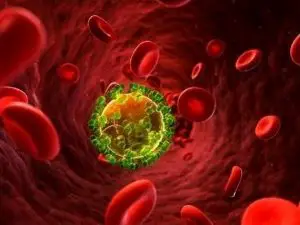A threat vector can cause CBRN exposure in several ways, which can lead to serious health consequences. Keep reading this post to find out how to protect yourself in these situations.
CBRN Threat Vectors: What are they?
A CBRN threat vector is a pathway in which a dangerous chemical agent can access your physical body. Without adequate protection with PPE, one of these pathways can be breached or entered by the chemical agent, leading to potentially serious health outcomes, such as incapacitation and even death.
What are CBRNE threat agents?
Chemical, Biological, Radiological, and Nuclear (CBRN) weapons and materials are usually referred to as “CBRN” when employed maliciously to inflict considerable injury or disruption. Mass fatalities and social upheaval may be caused by these weapons capable of both weapons.
How do CBRN agents enter the body?
CBRN chemicals may enter the body in a variety of ways, resulting in a wide range of symptoms and indications. They enter the body in the following ways:
– Inhalation- when pathogens are suspended in the air, they can be inhaled into the lungs.
– Skin contact or absorption- when harmful agents come into contact with the skin, they can be absorbed into the body.
– Ingestion- when harmful agents are ingested, they can cause
Gases, vapors, and aerosols may be breathed via all of a person’s nasal and mouth mucosa, as well as into their lungs.
What is CBRN terrorism?
CBRN weapons and associated materials might be exploited by non-state actors for terrorist or criminal reasons, and this is one of the most pressing issues of our day A unified legal framework has been developed by the international community in an effort to avoid and address this menace.
Related Questions and Answers
What is the difference between CBRN and Hazmat?
Terrorist attacks and other planned releases of hazardous materials are usually labeled as CBRN; on the other hand, inadvertent releases of toxic industrial material are often labeled as Hazmat.
What are CBRN disasters?
Uncontrolled release of chemicals or biological agents or radioactive contaminants into the environment or explosions that cause extensive harm is referred to as CBRNE incident. It is possible for CBRNE incidents to be the result of both natural and man-made causes.
What is the difference between chemical biological and nuclear weapons?
Neither chemical nor nuclear weapons of mass devastation are inherently better than the other. Nuclear fission shapes and destroys life, whereas chemical weapons utilize poisonous chemicals to kill large numbers. Compared to chemical weapons, nuclear weapons do more damage, and their effects last far longer.
Which four routes can chemicals enter the body?
The first step in understanding how chemical dangers might harm you is understanding the ways in which chemicals can enter your body and cause harm. Inhalation, ingestion, injection, and absorption via the skin and eyes are the four primary methods of the entrance.
What counts as chemical warfare?
Chemical warfare includes intentionally using a weapon’s harmful effects on non-targets. It is separate from nuclear and biological warfare, which combined form up NBC, which stands for Nuclear, Biological, and Chemical Weapons (warfare or weapons).
Which are examples of chemical agents used for terrorism?
Chemical agents used in terrorism include Chlorine and other pulmonary irritants, Cyanide, Mustard gas and other blistering chemicals, and a variety of nerve agents, such as sarin, GD, VX, and various pesticides. Riot-control agents are incapacitating (similar to MACE) and can be used in terrorist activities.
What is CBRN all about?
This video provides some details:
Is P100 a CBRN?
P100 filter media is used in the CBRN APR canister to remove particles from the air. Filtering particles is classified as protection, but radioactive gases or vapors are not.
Does 74D require security clearance?
A minimum ASVAB score of 100 in Skilled Technical (ST) is required to be a 74D MOS. After completing MOS 75D, you will be needed to have a SECRET security clearance.
What are the fundamental principles when dealing with CBRN hazmat incidents?
Get people away from the source of the pollution by performing an evacuation. Reassure the patient that medical assistance is on the way with urgent medical advice and reassurance. remove one’s outerwear. Dry decontamination should be the primary method of decontamination.
Conclusion
CBRN threat vectors must be stopped to prevent access to the body by dangerous substances and chemicals, including those that are airborne. Make sure to wear adequate PPE at all times when in these types of environments.
The “CBRN handbook” is a book that includes information about the different types of weapons and agents used in chemical, biological, radiological, and nuclear warfare.
NEXT UP: Do Respirators Block Your Ability to Smell?
Related Tags
- cbrn examples
- cbrn threats
- cbrn training pdf
- what is cbrn
- cbrn pdf


